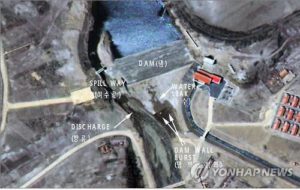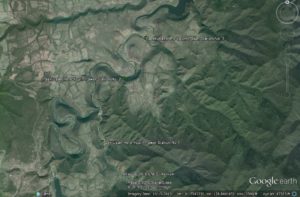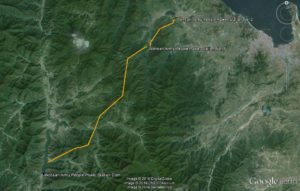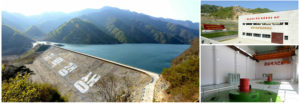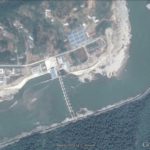Below I have posted the economic section of Kim Jong-un’s 2018 new year speech in English and Korean:
Comrades,
동지들!
This year we will mark the 70th anniversary of the founding of the glorious Democratic People’s Republic of Korea. To mark the 70th anniversary of their state with splendour is of real significance for the great people, who have raised with dignity the status of their socialist country, the greatest patriotic legacy of the great Comrades Kim Il Sung and Kim Jong Il, to that of a strategic state recognized by the world. [Translation note: In the Korean version below, Kim Il-sung and Kim Jong-il are not mentioned by name, only by title]
올해에 우리는 영광스러운 조선민주주의인민공화국창건 일흔돐을 맞이하게 됩니다.위대한 수령님과 위대한 장군님의 최대의 애국유산인 사회주의 우리 국가를 세계가 공인하는 전략국가의 지위에 당당히 올려세운 위대한 인민이 자기 국가의 창건 일흔돐을 성대히 기념하게 되는것은 참으로 의의깊은 일입니다.
We should make constant innovations and continued progress until we win the final victory of the revolution by carrying on the tradition of heroic struggle and collective innovation which adorned the founding and course of development of Juche Korea. A revolutionary general offensive should be launched to achieve fresh victory on all fronts of building a powerful socialist country by taking the historic victory in the building of the DPRK’s nuclear forces as a springboard for fresh progress.
우리는 주체조선의 건국과 발전행로에 빛나는 영웅적투쟁과 집단적혁신의 전통을 이어 혁명의 최후승리를 이룩할 때까지 계속혁신,계속전진해나가야 합니다.공화국핵무력건설에서 이룩한 력사적승리를 새로운 발전의 도약대로 삼고 사회주의강국건설의 모든 전선에서 새로운 승리를 쟁취하기 위한 혁명적인 총공세를 벌려나가야 합니다.
“Let us launch a revolutionary general offensive to achieve fresh victory on all fronts of building a powerful socialist country!” This is the revolutionary slogan we should uphold. All officials, Party members and other working people should launch an all-people general offensive to frustrate the challenges of the hostile forces who are making last-ditch efforts and raise the overall strength of our Republic to a new stage of development as they brought about a great upsurge in socialist construction overcoming all difficulties through the great Chollima upswing after the war.
《혁명적인 총공세로 사회주의강국건설의 모든 전선에서 새로운 승리를 쟁취하자!》 이것이 우리가 들고나가야 할 혁명적구호입니다.모든 일군들과 당원들과 근로자들은 전후 천리마대고조로 난국을 뚫고 사회주의건설에서 일대 앙양을 일으킨것처럼 전인민적인 총공세를 벌려 최후발악하는 적대세력들의 도전을 짓부시고 공화국의 전반적국력을 새로운 발전단계에 올려세워야 합니다.
A breakthrough should be made in reenergizing the overall economic front this year, the third year of implementing the five-year strategy for national economic development.
국가경제발전 5개년전략수행의 세번째 해인 올해에 경제전선전반에서 활성화의 돌파구를 열어제껴야 하겠습니다.
The central task facing socialist economic construction this year is to enhance the independence and Juche character of the national economy and improve the people’s standard of living as required by the revolutionary counter-strategy put forward by the Second Plenary Meeting of the Seventh Central Committee of the Party.
올해 사회주의경제건설에서 나서는 중심과업은 당중앙위원회 제7기 제2차전원회의가 제시한 혁명적대응전략의 요구대로 인민경제의 자립성과 주체성을 강화하고 인민생활을 개선향상시키는것입니다.
We should concentrate all efforts on consolidating the independence and Juche character of the national economy.
인민경제의 자립성과 주체성을 강화하는데 총력을 집중하여야 합니다.
The electric-power industry should maintain and reinforce the self-supporting power generation bases, and direct a great deal of efforts to developing new power sources. A dynamic campaign should be conducted to drastically increase thermal power generation, and lower the loss of electric power and increase its production as much as possible by maintaining and reinforcing imperfect generating facilitates. Provinces should build power generation bases to suit their local features and put power generation at the existing medium and small-sized power stations on a normal footing to satisfy the needs of electric power for local industry by themselves. Alternated production should be organized scrupulously throughout the country, and a vigorous struggle waged against the practices of wasting electric power to make effective use of generated electric power.
전력공업부문에서는 자립적동력기지들을 정비보강하고 새로운 동력자원개발에 큰 힘을 넣어야 합니다.화력에 의한 전력생산을 결정적으로 늘이며 불비한 발전설비들을 정비보강하여 전력손실을 줄이고 최대한 증산하기 위한 투쟁을 힘있게 벌려야 합니다.도들에서 자기 지방의 특성에 맞는 전력생산기지들을 일떠세우며 이미 건설된 중소형수력발전소들에서 전력생산을 정상화하여 지방공업부문의 전력을 자체로 보장하도록 하여야 합니다.전국가적인 교차생산조직을 짜고들며 전력랑비현상과의 투쟁을 힘있게 벌려 생산된 전력을 효과적으로 리용하기 위한 된바람을 일으키도록 하여야 합니다.
The metallurgical industry should further improve the Juche-oriented iron- and steel-making technologies, increase the iron production capacity and drastically raise the quality of metallic materials in order to satisfy the needs of the national economy for iron and steel. It is necessary to ensure a preferential, planned and timely supply of electricity, concentrated iron ore, anthracite, lignite, freight wagons, locomotives and funds for the metallurgical industry. By doing so, we can fulfil next year’s iron and steel production plans and make the industry Juche-oriented without fail.
금속공업부문에서는 주체적인 제철,제강기술을 더욱 완성하고 철생산능력을 확장하며 금속재료의 질을 결정적으로 높여 인민경제의 철강재수요를 충족시켜야 합니다.금속공업부문에 필요한 전력,철정광,무연탄,갈탄,화차와 기관차,자금을 다른 부문에 앞세워 계획대로 어김없이 보장하여 다음해 철강재생산목표를 무조건 수행하며 금속공업의 주체화를 기어이 완성하도록 하여야 하겠습니다.
The chemical industry should step up the establishment of the C1 chemical industry, push the projects for catalyst production base and phosphatic fertilizer factory as scheduled, and renovate and perfect the sodium carbonate production line whose starting material is glauberite.
화학공업부문에서 탄소하나화학공업창설을 다그치고 촉매생산기지와 린비료공장건설을 계획대로 추진하며 회망초를 출발원료로 하는 탄산소다생산공정을 개건완비하여야 합니다.
The machine-building industry should modernize the Kumsong Tractor Factory, Sungri Motor Complex and other factories to develop and produce world-level machinery in our style.
기계공업부문에서는 금성뜨락또르공장과 승리자동차련합기업소를 비롯한 기계공장들을 현대화하고 세계적수준의 기계제품들을 우리 식으로 개발생산하여야 합니다.
The coal and mineral production and rail transport sectors should make concerted efforts to make the country’s self-reliant economic foundations prove their effectiveness.
나라의 자립적경제토대가 은을 낼수 있게 석탄과 광물생산,철도수송에서 련대적혁신을 일으켜야 합니다.
Notably, the rail transport sector should make the best use of the existing transport capacity by making transport organization and control more scientific and rational, and maintain discipline and order in the railways as rigid as in the army, so as to ensure an accident-free, on-schedule rail traffic.
특히 철도운수부문에서 수송조직과 지휘를 과학화,합리화하여 현존수송능력을 최대한 효과있게 리용하며 철도에 군대와 같은 강한 규률과 질서를 세워 렬차의 무사고정시운행을 보장하도록 하여야 합니다.
A turn should be brought about this year in improving the people’s standard of living.
올해에 인민생활향상에서 전환을 가져와야 합니다.
Light-industry factories need to transform their equipment and production lines into labour- and electricity-saving ones and produce and supply more diversified and quality consumer goods with domestic raw and other materials, and provinces, cities and counties should develop the local economy in a characteristic way by relying on their own raw material resources.
경공업공장들의 설비와 생산공정을 로력절약형,전기절약형으로 개조하고 국내원료와 자재로 다양하고 질좋은 소비품들을 더 많이 생산공급하며 도,시,군들에서 자체의 원료원천에 의거하여 지방경제를 특색있게 발전시켜야 합니다.
The agricultural and fishing fronts should effect an upswing. We should introduce seeds of superior strains, high-yield farming methods and high-performance farm machines on an extensive scale, do farming scientifically and technologically so as to fulfil the cereals production plan without fail, and boost the production of livestock products, fruits, greenhouse vegetables and mushrooms. We should enhance our ship building and repair capacities, launch scientific fishing campaigns, and reenergize aquatic farming.
농업과 수산전선에서 앙양을 일으켜야 하겠습니다.우량종자와 다수확농법,능률적인 농기계들을 대대적으로 받아들이고 농사를 과학기술적으로 지어 알곡생산목표를 반드시 점령하며 축산물과 과일,온실남새와 버섯생산을 늘여야 합니다.배무이와 배수리능력을 높이고 과학적인 어로전을 전개하며 양어와 양식을 활성화하여야 하겠습니다.
This year the service personnel and people should join efforts to complete the construction of the Wonsan-Kalma coastal tourist area in the shortest period of time, push ahead with major construction projects including the renovation of Samjiyon County, the construction of the Tanchon Power Station and the second-stage waterway project of South Hwanghae Province, and channel steady efforts into the construction of houses.
올해에 군민이 힘을 합쳐 원산갈마해안관광지구건설을 최단기간내에 완공하고 삼지연군꾸리기와 단천발전소건설,황해남도물길 2단계 공사를 비롯한 중요대상건설을 다그치며 살림집건설에 계속 힘을 넣어야 합니다.
Building on the success we achieved in the forest restoration campaign, we should properly protect and manage the forests that have already been created, improve the technical conditions of roads, conduct river improvement on a regular basis, and protect environment in a scientific and responsible manner.
산림복구전투성과를 더욱 확대하면서 이미 조성된 산림에 대한 보호관리를 잘하는것과 함께 도로의 기술상태를 개선하고 강하천정리를 정상화하며 환경보호사업을 과학적으로,책임적으로 하여야 합니다.
Every sector and every unit of the national economy should enlist their own technical forces and economic potential to the maximum and launch a dynamic struggle to increase production and practise economy, so as to create a greater amount of material wealth.
인민경제 모든 부문과 단위들에서 자체의 기술력량과 경제적잠재력을 총동원하고 증산절약투쟁을 힘있게 벌려 더 많은 물질적재부를 창조하여야 합니다.
A shortcut to developing the self-sufficient economy is to give precedence to science and technology and make innovations in economic planning and guidance.
자립경제발전의 지름길은 과학기술을 앞세우고 경제작전과 지휘를 혁신하는데 있습니다.
The scientific research sector should solve on a preferential basis the scientific and technological problems arising in establishing Juche-oriented production lines of our own style, ensuring domestic production of raw and other materials and equipment, and perfecting the structure of the self-supporting economy. Every sector and every unit of the national economy should make a contribution to achieving production growth by intensifying the dissemination of science and technology and waging a brisk technological innovation drive.
과학연구부문에서는 우리 식의 주체적인 생산공정들을 확립하고 원료와 자재,설비를 국산화하며 자립적경제구조를 완비하는데서 제기되는 과학기술적문제들을 우선적으로 풀어나가야 합니다.인민경제 모든 부문과 단위들에서 과학기술보급사업을 강화하며 기술혁신운동을 활발히 벌려 생산장성에 이바지하여야 하겠습니다.
The Cabinet and other economic guidance organs should work out a realistic operational plan to carry out the national economic plan for this year and push forward the work for its implementation responsibly and persistently. Positive measures should be taken by the state to ensure that the socialist system of responsible business operation proves its worth in factories, enterprises and cooperative organizations.
내각을 비롯한 경제지도기관들은 올해 인민경제계획을 수행하기 위한 작전안을 현실성있게 세우며 그 집행을 위한 사업을 책임적으로 완강하게 내밀어야 합니다.국가적으로 사회주의기업책임관리제가 공장,기업소,협동단체들에서 실지 은을 낼수 있도록 적극적인 대책을 세워야 합니다.

